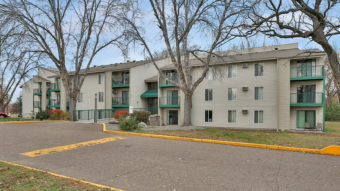The COVID-19 pandemic hurt the retail industry. But how badly? How about major retail chains closing more than 12,000 retail locations?
That happened in 2020, according to a new report from the National League of Cities, The Future of Cities: Reenvisioning Retail. The report studied the impact of the pandemic on retail and found that COVID-19 had a devastating impact on the sector.
But the report also found hope. While retailers struggled during the pandemic, many also evolved and made changes that will have a positive impact on their business models now and in future years.
What’s most interesting about the report is what it uncovered about retail sector jobs. According to the report, retail industry jobs declined during the pandemic more rapidly than they did during the Great Recession. But they have also experienced a faster recovery, thanks in part to the way local businesses and governments adapted during the pandemic.
The raw numbers, though, remain scary. The National League of Cities reported that retail chains closed more than 12,200 locations permanently in 2020. That comes out to 159 million square feet of emptied retail space.
By April of 2021, the number of open small businesses decreased by 33.6 percent when compared to Janaury of 2020, according to the report.
But there is some good news. The National League of Cities says that despite the many business closures, retailers across the country plan to open more stores than they plan to close in 2021, with an increase of nearly 40 percent in year-over-year store opening announcements.
What’s behind this? The league says that retailers pivoted during the pandemic, boosting the percentage of their businesses devoted to online sales, curbside pickup and delivery. The league’s report says that e-commerce grew from 11 percent of retail sales in 2019 to 14 percent in 2020.
To meet the demand from this, employment in the warehousing and storage sector grew by 8 percent from January of 2020 to January of this year.
The pandemic accelerated some trends that were taking place before 2020. The National League of Cities found retail job losses during COVID-19 were heavily concentrated in sectors already on the decline before the pandemic hit. Clothing, sporting goods, hobby, book and music and electronic stores saw employment drops of 15 percent to 25 percent during the past year.
And while traditional retail positions such as cashiers are on the decline, retail employment overall is rebounding because companies are hiring more stockers, order fillers and service drivers to meet the rising demand for online shopping.
The National League of Cities’ report is about the future, and in it the league makes some key predictions on how the next years of retail will look.
Experience-based retail is the future: Despite taking a hit during the pandemic, retailers that offer experiences that customers can’t get online will thrive. This also means that the types of retail jobs will change as successful retailers plan for a shift in their business model and workforce.
Emerging technologies are revolutionizing the retail industry: As retailers embrace these new technologies, there will be a continued need to work hand-in-hand with local governments to determine their proper use and benefits to the broader community.
Mixed-use retail spaces are on the rise in U.S. metro regions: As retailers integrate more into decentralized, neighborhood-based locations to meet customers where they are, the demand for mixed-use commercial spaces for retailers large and small will continue to grow.




